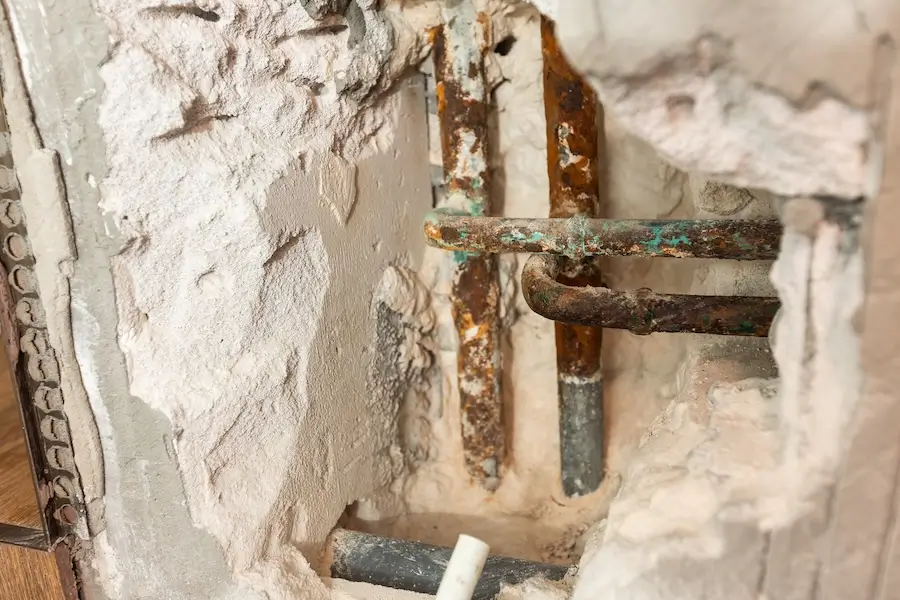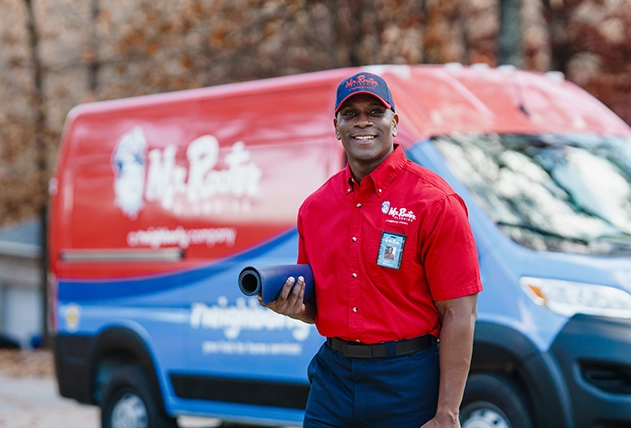
Summary:Mr. Rooter Plumbing® shares insight into the urgency of slab foundation leaks, the warning signs, and how plumbers can repair them.
|
Slab foundation leaks occur when the pipes within a property’s foundation slab start leaking. If swift action isn’t taken to solve the issue, the wet soil can expand and crack, leading to ground movement. That ground movement can then cause your home or business to crack and shift. Essentially, it’s a serious issue that requires a fast resolution.
The good news is that you’re not stuck with a leaking slab and property damage forever. Licensed and insured plumbers can provide slab leak detection services and devise a plan to stop the leak and repair your plumbing. Keep reading to learn about the signs of a slab leak, how plumbers diagnose them, and the most common slab leak repair solutions that experienced service professionals recommend.
How Plumbers Diagnose a Slab Leak
Before a plumber can repair a slab leak, they must first identify its source. Using information you’ve provided them, such as a damp spot, a floor crack, or increased plant growth, they then investigate further with specialized equipment.
Acoustic listening devices help them to narrow down the area of your slab that needs attention. They listen for the faint sound of water escaping pipes under the slab. Infrared cameras are also helpful as they detect temperature changes caused by leaking water.
Finally, experienced plumbers use video inspection equipment to examine your plumbing system for damage or breakage, pinpointing the exact area where it’s leaking.
Slab Leak Solutions
Once a leak has been detected in your slab foundation, it’s time to repair it. Experienced plumbers consider the seriousness of the leak and its location before choosing any of these common repair methods:
Trenchless Slab Leak Repair
Depending on the extent and location of your foundation leak, your local plumber may recommend trenchless slab leak repair. This concrete slab leak repair remedy is preferred for its non-invasive nature compared to other methods.
After diagnosing the leak, plumbers create access holes in your yard and insert epoxy pipe lining materials into the broken pipe. Once in place, they cure the epoxy to seal the holes, thus stopping the leak. Trenchless slab leak repair is a small-scale version of pipe relining that plumbers use to fix damaged sewer lines.
Pipe Re-Routing
If the leak within your foundation has a high enough flow or has been left unattended for an extended period, pipe re-routing can be a preferred solution. This repair method is invasive, but often necessary for those more serious leaks.
Pipe re-routing involves tearing out parts of your property’s walls and/or floors to access the pipes underneath. Once the plumbers have access, they install new pipes to bypass the broken and damaged ones. Allow several days for this repair, as pipe re-routing requires breaking through the slab foundation.
Tunneling
Depending on where the damaged pipes are, tunneling can be an effective plumbing solution for a slab foundation leak. It’s more invasive than a trenchless slab leak repair, but less invasive than re-routing.
As the name suggests, tunneling involves digging tunnels underneath your house while maintaining its structural integrity and replacing the damaged pipes. Like pipe re-routing, tunneling can take a few days due to the time involved in digging the tunnels.
Slab Leak Symptoms: What to Look for
Being aware of the most common slab leak symptoms can serve you well. Should you ever suspect a foundation leak, you’ll know what to look for to confirm your suspicions and act quickly.
- Higher-than-normal water bills
- Wet carpet and flooring
- Warm and cold spots beneath the floors
- Mold growth underneath carpets
- Running water sounds with no explanation
- Unusually low water pressure
- Visible water puddles around your foundation
- Floor damage - like raised sections and warping
- Cracks in your baseboards, walls, and foundation (in severe cases)
Contact Mr. Rooter Plumbing® for Slab Leak Repair
Slab leaks are one of the most serious plumbing issues a homeowner can face, as they can cause extensive damage to your foundation, flooring, and walls if not addressed promptly. Timely detection and repair are crucial to prevent costly structural problems and water damage. If you suspect a leak involving your foundation, contact your locally owned and operated Mr. Rooter Plumbing® for slab leak repair services. Our emergency plumbers are available 24/7 to take your call.

